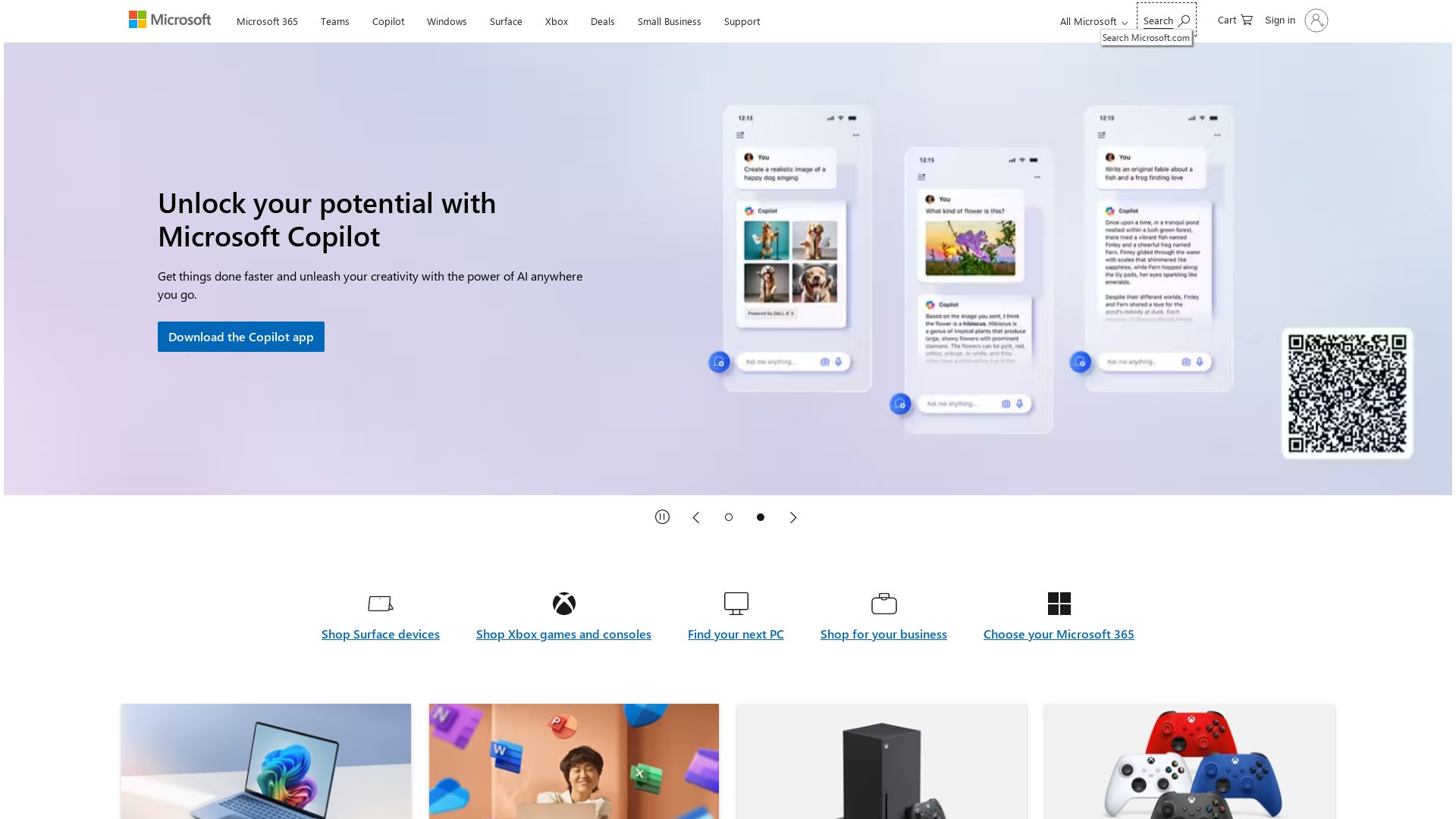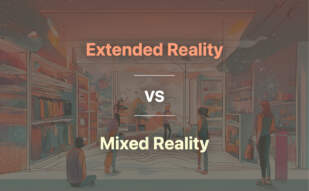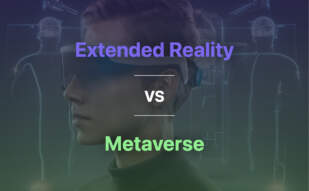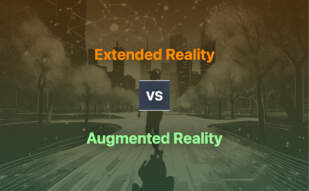Extended reality (XR) encompasses virtual reality (VR), augmented reality (AR), and mixed reality (MR), with applications spanning industries like gaming, education, and healthcare. XR technologies trace back to Sir Charles Wheatstone’s concept of stereopsis in the 1800s. Estimated spending on XR products and services is projected to hit $18.8 billion in 2020, with XR heavily utilized in the creative economy.

For those exploring options beyond Extended Reality, alternatives include Mixed Reality, Augmented Reality, Virtual Reality, Metaverse, 3D, Simulation, Digital Twin, Holograms, and Artificial Intelligence.
Mixed Reality

Situated further along the virtuality continuum, Mixed Reality (MR), introduced initially by Paul Milgram and Fumio Kishino in 1994, blends the physical and digital worlds to create a unique environment where natural and intuitive 3D human-computer-environment interactions are possible. Emerging from the combined potential of big data, cloud computing and advanced AI, MR offers a range of immersive experiences, intensifying our connection with the world around us.
Mixed Reality Top Features
- Holographic and Immersive VR devices: Enhancing user experiences.
- Enterprise MR: MR is an innovative tool for enterprises, offering fresh possibilities for training and production.
- MRTouch: Blend of HoloLens’ environment mapping and hand-tracking technology, exploring new ways of HCI.
- Portable MR: MR applications being developed for smartphones, tablets and smart eyeglasses.
| Interactivity | Real-world and digital elements interact, creating a dynamic user experience. |
| Educational potential | Significant contributions to educational purposes, including visualizations and interactive trainings. |
| Innovative B2B communication | Simulated face-to-face international meetings that utilize time, distance and resources efficiently. |
Mixed Reality Downsides
- Device dependency: The use of mixed reality is significantly tied to particular tools like headsets and smart glasses.
- Privacy concerns: The blending of real and virtual worlds can create potential issues regarding user data and privacy.
- High costs: High-value devices like the Microsoft HoloLens and Samsung HMD Odyssey+, though innovative, remain costly.
Mixed Reality Pricing
While Mixed Reality does offer an unparalleled blend of the physical and digital, it is an investment. Current MR devices can range from $300 to $3,000. However, as innovation presses forward, it’s anticipated that more accessible devices such as camera-equipped smartphones, tablets and smart eyeglasses will become the future tools for Mixed Reality.
Mixed Reality Use Cases
Use case 1: Healthcare
In the healthcare sector, surgeons employ Mixed Reality to practice precise medical procedures, enhancing surgical precision and patient safety. This technology has also proven its value in training, providing a high-impact learning environment for medical professionals.
Use case 2: Architecture and Design
In architecture and design, Mixed Reality enables professionals to interact with new projects before they are physically built. Its usage in this field allows for an immersive understanding of design and spatial relationships that conventional blueprints cannot provide.
Use case 3: Industrial Training
Companies in sectors like aviation have recognized the benefits of Mixed Reality as a cost and time-effective platform for training repair technicians. MR’s immersive nature offers a realistic practice ground, reducing the risk of mistakes in real-world applications.
Augmented Reality (AR): Reality with a Digital Twist
An evolution in the landscape of technology, the first of its kind, Augmented Reality (AR) beautifully blends the physical world with the digital. What sets it apart? Instead of crafting an entirely virtual ecosystem, AR enhances your reality – the real world, with engaging digital elements!
Prime Features of Augmented Reality
- Meaningful Content: AR offers rich, interactive content that resonates with users.
- Realistic Interaction: Crafted to bridge the gap between the virtual and physical, AR ensures a seamless blend.
- Unique Values: Outshines traditional technologies with its immersive experience.
- AI and AR Software: Powered by artificial intelligence and dedicated AR software for an authentic, realistic experience.
- SLAM technology: A crucial component, Simultaneous Localization And Mapping technology drives the AR magic.
| AR Technology | Importance |
|---|---|
| Object Recognition | Real-time identification and interaction with the physical environment |
| 3D Presentation | Delivers accurate 3D view of virtual items |
| Real-time Augmentation | Embeds virtual elements within the environmental context in real-time |
Limited by Certain Downsides
- Hardware Dependency: AR’s success relies heavily on powerful mobile devices.
- Object Identification: Marker-based AR ensures precise image display, but it requires image recognition.
- Data Processing: AR devices require significant data processing resources.
Augmented Reality: Impacting Industries
Retail
Retailers have swiftly adopted AR, offering customers virtual “try-on” experiences. Imagine seeing how a pair of sunglasses fits you without even leaving your home!
Entertainment and Gaming
From AR games to immersive experiences guaranteeing thrills, the entertainment industry has notably harnessed AR.
Learning and Manufacturing
Whether it’s exploring historical constructs or aiding manufacturing processes, AR is increasingly influencing education and industrial sectors.
Virtual Reality
The evolution of Virtual Reality (VR) began in the 1800s, pioneering a transformative wave in technology and entertainment. Initially conceptualized as a multisensory simulating mechanism, VR has progressed into a formidable technological domain.
Virtual Reality Top Features
- Stereoscope (1838): The genesis of immersive 3D visual technology, a foundational element of modern VR.
- Sensorama (1956): Created by Morton Heilig, provided multisensory simulation through wind, vibration, smell, audio, and 3D video effects.
- DataGlove, EyePhone HMD, Audio Sphere: Innovations by VPL Research that led to the commercialization of VR equipment.
- Oculus Rift Prototype (2010): Featured 90-degree field of vision, enhancing the immersive VR experience.
| Creation | Description |
|---|---|
| Telesphere Mask (1960) | Morton Heilig’s groundbreaking Head Mounted Display (HMD) delivering stereoscopic 3D visuals. |
| Sword of Damocles (1968) | The first computer-connected VR HMD, developed by Sutherland and Sproull. |
| Virtuality VR Arcade Machine | Jonathan Waldern’s milestone at the Computer Graphics 90 exhibition in London. |
Virtual Reality Limitations
- Compared to traditional 3D models, early computer-generated VR was not interactive.
- VR systems, particularly advanced headsets, have traditionally been price prohibitive, limiting mass adoption.
- Motion sickness is a common issue reported by VR users.
Virtual Reality Use Cases
Use case 1: Military Training
VR provides an excellent platform for safely simulating military scenarios, allowing for effective and risk-free training.
Use case 2: Flight Simulation
With VR’s lifelike visuals and immersive environment, flight simulators offer unprecedented training opportunities for pilots.
Use case 3: Gaming
VR has revolutionized the gaming industry, providing fully immersive experiences that transport players into the gaming world.
Metaverse
The Metaverse, born from Sci-Fi literature like “Snow Crash”, and nurtured through technological advances such as VPL Research’s VR headset development in 1984, is an immersive 3D internet concept. Its evolution ignited with Facebook’s rebranding as Meta in 2021. The Metaverse integrates VR and AR experiences and incorporates Blockchain and NFTs for seamless commerce and interoperability.
Metaverse Top Features
- Immersive 3D experience: Allows consumers and industries to exist in a multitude of 3D worlds for limitless exploration and interaction.
- Integration of VR and AR: Enables users to interact with digital and physical realms seamlessly to create immersive experiences..
- Use of Blockchain and NFTs: Facilitates secure transactions and data interoperability.
- Unified interface: Provides users with smooth accessibility into variously themed 3D worlds.
| Feature | Benefit |
|---|---|
| Haptic technology | Creates a tangible, interactive experience by engaging multiple senses. |
| Integration of key tech innovations | Offers users an enriched and evolving digital landscape. |
Metaverse Limitations
- Requires high-speed internet: To realize its full potential, users need a robust internet connection.
- Potential for digital divide: Access to expensive devices and high-speed internet can exacerbate the global digital divide.
- Privacy concerns: Inherent in any internet-based platform, Metaverse users need to be aware of potential data and privacy risks.
Metaverse Use Cases
Retail and Marketing
Companies like Nike, Tommy Hilfiger, and McLaren are exploiting the Metaverse’s potential in retail and marketing to create unique customer experiences.
Virtual Collaboration
Microsoft’s Mesh is a Metaverse application targeted at fostering seamless virtual collaboration across industries and geographical borders.
Industrial Applications
Innovative partnerships like those between Siemens and Nvidia hint at the Metaverse’s potential in transforming industrial operations.
3D
Tracing its roots back to the work of the pioneering Ivan Sutherland in the 1960s, the domain of 3D modeling has grown exponentially. Harnessing specialized computer software, 3D models provide an interactive, on-screen experience that can be rotated, flipped, and more.
3D Top Features
- Wire-frame models: Ideal for initial stages of designing, they are made from lines and arcs and offer transparent surfaces.
- Surface models: With definitive textures, these provide firmness to design and offer opaque or translucent surfaces.
- Solid 3D models: Most advanced of all three, demands heavy computation, and offer detailed attributes such as weight, material density, and mechanical stress.
- Speed and Accuracy: 3D modeling enables synergy of quick designing with accurate, error-free planning.
- Wide-Ranging Applications: From architecture to consumer products, education, and much more.
- 3D Printing: 3D models can be brought to reality using 3D printing techniques.
| Software | Release Year |
|---|---|
| AutoDesk 3ds Max | 1990 |
| Cinema 4D | 1990 |
| Houdini | 1996 |
| V-Ray | 1997 |
| AutoDesk Revit | 2000 |
3D Limitations
- Computational power: Solid 3D models are particularly heavy on resources.
- Learning curve: Mastering 3D design software requires skill and time.
- Scalability: Large-scale projects could pose technical challenges.
3D Use Cases
Use Case 1: Architecture
The precision and interactive nature of 3D modeling make it indispensable for architectural design and planning.
Use Case 2: Education
3D models provide an immersive learning experience, making complex concepts easily understandable.
Use Case 3: Consumer Products
From toys to household items, 3D modeling is crucial for the design and prototyping of consumer products.
Simulation
Born from the intellects of esteemed mathematicians, John Von Neumann and Stanislaw Ulam, Simulation paints a vivid history traversing the realms of atomic physics, industry, and business. Reinventing itself with each stride in computer science, it currently stands as a potential propellant of operations across sectors, fueled by the pioneering surge in AR/VR technology.
Simulation Top Features
- Interactive visual content and real-time feedback usher in unparalleled operational clarity.
- Usage spans diverse industries including automation, robotics, electronics, electromechanics, and PLC in education.
- Significantly boosts production capacity; Cymer Inc.’s productivity leapfrogged by 400% through simulation software deployment.
- Its protective nature enables safe practice and skill honing in high-risk scenarios.
- Analytical prowess that visualises statistical probabilities in hypothetical situations.
| Memorability | Safety in Training | Global Worth |
|---|---|---|
| Research indicates VR simulations score over text and video content. | Simulation software can fulfill up to 50% of traditional clinical training requirements. | The simulation industry is estimated at over $15 billion with an anticipated five-year growth of 39%. |
Simulation Disadvantages
- Historically, cost, the necessity for experts, and ambiguous results have limited extensive usage.
- Devices like the IBM 1620 served as primary vehicles in the early phase of simulation.
- Limitation roots lay in atomic physics which posed constraints on business and industrial simulations.
Simulation Use Cases
Use case 1: Aviation and Transportation
Simulation serves as an instrumental tool for pilots-in-training, helping to master complex navigational systems and emergency procedures, without real-world risks.
Use case 2: Medical Training
From the first training mannequin “Mrs. Chase” in 1911 to Laerdal’s SimMan in 2001, Simulation has been indispensable in clinical education, revolutionizing procedures, and skill acquisition for medical professionals.
Use case 3: Manufacturing and Automation Systems
Simulation offers a comprehensive portrayal of processes, enhances productivity, and mitigates risks, contributing to a future where automation systems are further boosted by increased simulation usage.
Digital Twin
Conceived in the cosmos, birthed in the precincts of NASA, and maturing in the crucible of the digital age, Digital Twin stands as a transcendent concept in the landscape of Augmented Reality. It’s a digital mirror, echoing the form and function of real entities, bestowing on us the power to predict, optimize, and innovate without disturbing the material plane.
Best Features of Digital Twin
- Real-Time Updates: Unlike traditional simulations, digital twins offer a dynamic amalgam of real-life ebbs and flows with the digital milieu, fostering informed decision-making.
- Dataspaces: Leveraging the splendor of the Internet of Things (IoT), digital twins absorb the whispers of the physical world through an intricate network of sensors, recasting them as digital narratives.
- Resource Optimization: Machine learning presence in digital twin technology makes them efficient executors, capable of recognizing patterns and optimizing actions.
| Type | Role |
|---|---|
| Digital Twin Prototype (DTP) | Paved the way for envisioning and experimenting with the product before its physical realization. |
| Digital Twin Instance (DTI) | Continues the journey post-realization by enabling examination and tinkering in the digital space. |
| Digital Twin Aggregate (DTA) | Harvests the digital traits of multiple instances to formulate comprehensive capacity assessments. |
Digital Twin Downsides
- Over-engineering: The comprehensive nature of digital twin technology can seem like a tech overkill for simpler business issues.
- Cost: The creation and maintenance of digital twins can be a significant expenditure for small businesses.
- Security and Privacy Concerns: The twin’s intimate mirroring of sensitive real-world data presents security risks and warrants sophisticated protection strategies.
Digital Twin Uses Cases
Healthcare
By modeling the numerous variables that impact health, digital twins can help in better predicting disease outcomes, opening the gateway to precision medicine.
Automotive
A vehicle’s existence as a digital twin can revolutionize safety tests, performance enhancing modifications, and even breakdown predictions.
Power Generation
Digital twins of power plants can optimize processes and foresee breakdowns, enhancing operational efficiency, safety, and reliability.
Holograms
Since the inception of holography by British scientist Dennis Gabor in 1947, the field of Holograms has revolutionized fields from the military to education. Defined by the Greek words ‘holos’ and ‘gramma’, the whole message of a hologram delivers a complete and immersive experience.
Holograms Best Features
- High resolution: The desire to enhance the resolution of electron microscopes gave birth to holography, ensuring incredible detail in holographic depictions.
- Pulsed-ruby laser: Developed by Dr. T.H. Maimam, this technology enabled the capture of high-speed events and living subjects within holograms.
- Laser transmission holography: Introduced by the University of Michigan’s Emmett Leith and Juris Upatnieks in 1962, this technique enabled clear, 3D images with realistic depth.
| Feature | Advantage |
|---|---|
| White-light reflection holograms | Developed by Dr. Yuri Denisyuk, these holograms can be viewed under ordinary lighting conditions, increasing usability. |
| Embossing technique for mass production | Invented by Dr. Stephen Benton, this technique makes holograms widely accessible and affordable. |
Holograms Limitations
- Light source: Holograms require a coherent light source, limiting their application in some environments.
- Twin images; The image-forming process can sometimes produce duplicate images which can distort the desired output.
- Light intensity: The requirement for light to focus through a small pinhole can drain the light intensity, potentially hampering the quality of the hologram.
Holograms Pricing
While the cost of holography technology can vary widely based on specificity and application, mass production techniques, like embossing, have made holograms more affordable and accessible than in the past.
Holograms Use Cases
Use case 1: Military and Police Operations
Thanks to their high resolution and realistic depth, holograms can be used to create realistic terrain imaging, aiding in strategic planning and decision-making.
Use case 2: Education
Holograms provide an unmatched level of interactivity and immersion, making them perfect for enhancing learning experiences in classrooms.
Use case 3: Advertising
By leveraging the striking visuals of holograms, brands can create compelling, attention-grabbing advertisements.
Artificial Intelligence
First conceptualized in the 20th century, Artificial Intelligence (AI) has evolved to become an influential component of modern technology. Benefiting from the advances in computing power and accessibility, it has grown by leaps and bounds from the days of its first program, Logic Theorist, presented in 1956. Today, AI is integral to several sectors including tech, banking, marketing, and entertainment.
Artificial Intelligence Top Features
- Advanced machine learning algorithms allow AI to process large data and learn independently.
- Natural Language Processing (NLP) capabilities facilitate robust interaction with humans.
- Can be trained to surpass human cognitive abilities on specific tasks, like IBM’s Deep Blue defeating the world chess champion in 1997.
- Capable of processing and analyzing an exponentially growing data volume, particularly pertinent in the financial services industry.
| AI Technology | Benefit |
|---|---|
| Computer Vision (CV) | Allows automated processing and understanding of digital images or videos |
| Robotics Process Automation (RPA) | Aids in the automation of mundane tasks, freeing human capacity for more complex undertakings |
| Expert systems | Specialized applications that use a knowledge base of human expertise for problem solving |
Artificial Intelligence Limitations
- Fragmented funding patterns lead to alternating boom and bust periods.
- Historically, there have been several obstacles in its development, including lack of computational power.
- While machine learning enables continuous learning, the AI’s learning potential is largely reliant on the quality of input data.
Artificial Intelligence Use Cases
Use case 1: Data Analysis for Financial Services
In the world of finance, data generation is growing exponentially. AI can offer advanced analytic capabilities to extract value from this data and facilitate more efficient decision-making.
Use case 2: Automating Tasks via Robotics Process Automation
Robotics Process Automation facilitates automation of repetitive tasks, thus freeing up human capacity for more complex problem-solving. This is especially relevant in sectors such as tech and banking.
Use Case 3: Interacting with Digital Systems through NLP
AI’s Natural Language Processing capabilities allows systems to understand and react to human language for more efficient customer service response in industries such as marketing and entertainment.
Logan Bellbrook
Content writer @ Aircada with a knack for nature & AR/VR/XR. Blogging the intersection of tech & terrain.





